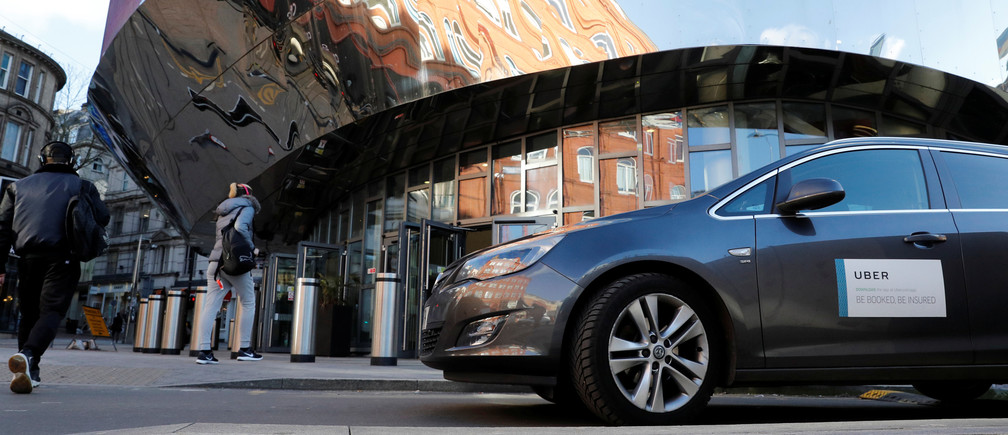Sharing economy is an economic model which includes providing or sharing goods and services, mostly at a peer-to-peer base. Quite straightforward from the literal implication, sharing economy emphasises on the behaviour of sharing to produce revenues from assets which may use to be underused. For instance, there are co-working platforms, peer-to-peer lending platforms, fashion platforms, and freelancing platforms that constituted the sharing economy (Kenton, 2017). Typical examples would be Airbnb and Uber which introduces drastic changes to their industries. There were no similar models of shared taxies or houses, yet these two companies had gained great success and made great impacts on traditional businesses. Based on the outstanding performance of these two companies, the sharing economy is expected to increase from $14 billion in 2014 to $335 billion by 2025 (Kenton, 2017).
The trend of sharing economy offers opportunities for new entrants and also introduce challenges to existing companies if they struggle to adapt to these drastic changes. Since most companies in the sharing economy utilize assets or utilities that were underused, they have a low entering cost thus are able to offer prices lower than the industry average. In this way, they can challenge the leading positions of existing companies or beat the traditional industry leaders. In addition to the choices of sharing transportation or accommodation as Uber and Airbnb did, other goods and services can also join the sharing economy. In the market of professional and personal services, the concept of sharing economy plays an important role. There are companies such as Fiverr which provide platforms for people to hire contractors, and skilled freelancers can share their expertise for extra money (Miller, 2018). Furthermore, sharing economy can even fit into the healthcare industry. According to Miller (2018), most of the medical equipment is estimated to be unused in 58% of its life, thus sharing equipment with other healthcare facilities became an effective solution to optimize the usage of medical equipment while decreasing costs at the same time.
In the future of sharing economy, the growth will be even more rapid and hard to predict. Both Uber and Lyft planned to go public and Lyft had just filled in the IPO documents on 1st March (Hawkins, 2019). Uber is now valued at $120 billion and also plans to go public in the first two quarters of 2019 (Rinne, 2019). According to Rinne (2019), revenue of sharing economy only accounts for 5% of the total revenue for ten sectors which include five traditional rental sectors and five sharing economy sectors in 2013. It is predicted to grow explosively from $15 billion to $335 billion in 2025, accounting for half of the total revenue for ten sectors. However, the fast growth of companies which incorporate the business model of sharing economy might be uneven. A failed case is Ofo, the bike-sharing company based in China which is on the edge of bankruptcy (Rinne, 2019). Ofo used to be regarded as a superstar in the bike industry, yet it did not stay at the winning place for a long time and quickly embraced its failure, probably due to its reckless expansion in both China and international markets.
There are controversies and criticisms of sharing economy and the one that draws the most attention is the regulatory issues of sharing. It is not only about how governments can prevent companies to take advantages of the vague requirements for licensing in offering rental goods or services, but also about how to proactively intervene to regulate and ensure a safe environment for both providers and consumers. There are so many uncertainties due to the peer-to-peer nature of the sharing economy, thus governments will need to decide whether to play a more proactive role in the markets or not.
References
Hawkins, A., (2019). Lyft becomes the first ride-hail company to go public, beating Uber. The Verge. Retrieved from https://www.theverge.com/2019/3/1/18246328/lyft-ipo-ride-share-bikes-scooters-uber-public-sec
Kenton, W., (2017). Sharing Economy. Investopedia. Retrieved from https://www.investopedia.com/terms/s/sharing-economy.asp
Miller, D., (2018). What Is the Sharing Economy (and How Is it Changing Industries)? The balance small business. Retrieved from https://www.thebalancesmb.com/the-sharing-economy-and-how-it-changes-industries-4172234
Rinne, A., (2019). 4 big trends for the sharing economy in 2019. World Economic Forum. Retrieved from https://www.weforum.org/agenda/2019/01/sharing-economy/


Hi Wenrui,
Very interesting topic that you are describing here in your blog. However, I was wondering if the sharing economy would bear more benefits than downsides for consumers. Sharing equipment and other things will lead to a decrease in cost for all the parties involved, since they dont have to buy anything, but instead are just ‘renting’ it. In turn, this will lead to more average usage per product, decreasing the number of total products bought. E.g. in the automotive industry this would lead to a decrease in the total amount of cars sold, decrease in costs for using a car, which in can additionally lead to positive external effects (less co2).
Interesting read. Regarding your Ofo example though, I think it is important to mention that it might have been Ofo itself that failed but that the sharing economy principle for bikes itself didn’t necessarily. In fact, not only in China, but in the United States as well it has proven to be quite popular actually (https://tech.co/news/bike-share-popular-2017-08)!